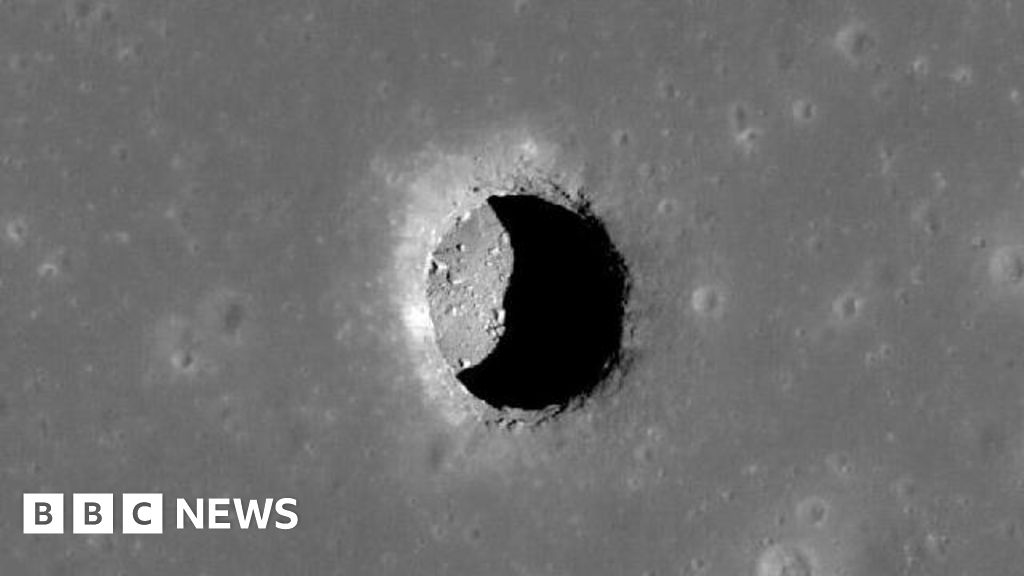- cross-posted to:
- [email protected]
- [email protected]
- cross-posted to:
- [email protected]
- [email protected]
Scientists have for the first time discovered a cave on the Moon.
At least 100m deep, it could be an ideal place for humans to build a permanent base, they say.
It is just one in probably hundreds of caves hidden in an “underground, undiscovered world”, according to the researchers.
Countries are racing to establish a permanent human presence on the Moon, but they will need to protect astronauts from radiation, extreme temperatures, and space weather.
Helen Sharman, the first British astronaut to travel to space, told BBC News that the newly-discovered cave looked like a good place for a base, and suggested humans could potentially be living in lunar pits in 20-30 years.



Because it’s costly to bring materials and to set up mining operations, a lot of tools will be made of readily available moon rock. So, maybe we’ll have a moon stone age, too.
More, shelter.
There’s no atmosphere to attenuate hard radiation, so rock overhead is the next best thing.
There’s no gravity to contain an atmosphere, and domes are expensive and time consuming to build. Meanwhile the crews are exposed to radiation.
There’s nothing but regolith on the surface of the moon-- finely powdered rock of unknown (and likely poor) assay for vital ores and minerals useful to bootstrap a colony.
A cave provides shelter, more assay-ably dense ore resources, potentially water in the form of subsurface ice, and potentially a vitrable (melted, glassified rock) cavity to contain a viable, pressurized atmosphere on the quick.
A cave on the moon is a find. Given the potential for neocolonialism in the next decade or three, it’s a boon for whatever program discovers one.
edit: typos
The space is a harsh mistress, but also I’m pretty sure all the brochures will have at least one window from where earth is visible.
Even the ones on the far side.
Also architecturally impossible, since there’s nothing to stop them from flying upwards. Pressure vessels work best when rounded on every side.
Edit: Unless you count a half-buried sphere as a dome.
There’s more of these known BTW. The new thing is just proof that the hole continues underneath like expected.
That’s just not true, there’s exposed rocky outcrops as well.
You can get a long way with just the rock-building elements of silicon, iron, aluminum and magnesium, metals-wise (and maybe calcium with no air to bother you). Volatiles are the real prize everyone is after.
Eh. How hard is it to bring a little arc furnace and start making aluminum? Hell, magnesium would be even easier, since hard vacuum is cheap up there.